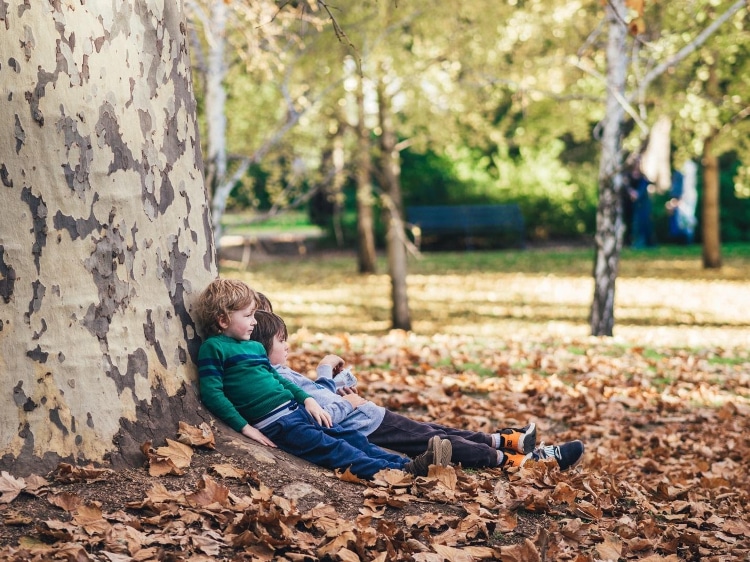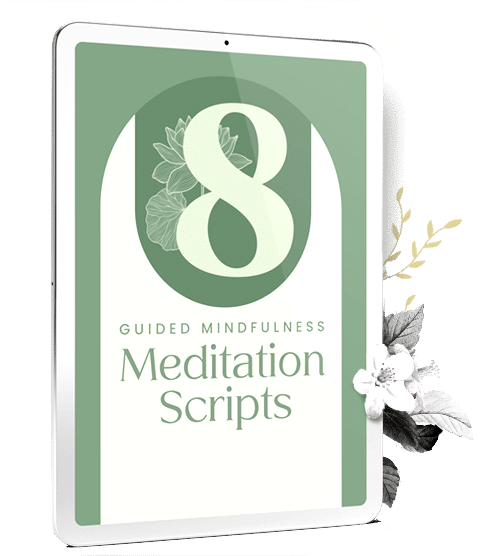Today’s students are growing up in a world that is spinning (metaphorically) faster and faster. While modern advances have made life easier for students in some regards, changes of the 21st century are also increasing stress, uncertainty, and anxiety for many youth.
For instance, 61% of college students in 2016 reported to have sought counseling for anxiety. Even young children report feeling stressed at school, with concerns ranging from demanding academic content to fear of failure to pressure in peer relationships.
While there are many considerations worth making to ameliorate these concerns, sharing mindfulness with students is one way of equipping youth with empowering tools to better manage their experience. By teaching mindfulness in schools, students gain new insight into how they can more effectively navigate this ever-changing world.

The Benefits of Mindfulness for Students
Though we often think that mindfulness is a practice for adults, it is a perfect practice (and way of being) to introduce to younger generations. Children grow up quickly and are faced with many life challenges from a young age. Mindfulness can help them to better navigate these challenges.
Some of the observed benefits of mindfulness for students include:
In addition, exploring mindfulness in schools benefits educators as well. Some of the benefits that mindfulness can have on teachers include:
Learn How to Certify to Teach Mindfulness Meditation.
Tips for Teaching Mindfulness to Students
If you are looking to start sharing mindfulness in schools, there are a few different tips you might want to consider. Sharing mindfulness with students can be done in a variety of ways and so these tips might help you to figure out what makes the most sense for the group you wish to work with.

Start with short mindful pauses.
Mindfulness requires focus and attention, which can be difficult for youth. Begin your exploration of mindfulness in schools by guiding students into short mindful pauses on a regular basis. This will help them to become more comfortable with the silence that often comes with mindfulness practice. For example, you might consider leading a one-minute mindfulness meditation and then inquiring as to how the experience was for them.
Explore a variety of short mindfulness meditations to gain inspiration.
Consider the age of those you are teaching to.
When planning a mindfulness session for students, take the age of the students into consideration. Teaching mindfulness to 7-year-olds will look differently than teaching to a class of teenagers. With younger children, it might be helpful to start with sensory exploration (such as a mindfulness in nature practice). With older students, you might first share how mindfulness can help with some of the common challenges that teenagers face.Enter your text here...
Be patient – and prepared for anything.
When teaching mindfulness to youth, be prepared for anything – from verbal resistance to whispering to giggling to frequent bathroom breaks. Be patient in the face of whatever comes up, remaining flexible in your approach. For instance, you might intuitively feel the need to explore mindful movement if there is a lot of energy swirling around the class. Be ready to shift directions if you need to.
Get to know the unique needs of the students in the class.
Furthermore, it is important to have a sense of what the students in the class might be experiencing. If you are from an outside organization or are not familiar with the children in that particular class, ask the teacher before beginning if there is anything you should be made aware of. For instance, if there are health concerns that might make it exceptionally difficult for a particular child to practice mindfulness, it would be best to be aware of that beforehand.
Consider using music to help your students tune in.
Another tip worth considering is to use music during your mindfulness sessions. Nature sounds, for instance, are soothing for both adults and children alike. By using mindful music as a backdrop – or, by at least beginning with it – you might find that student engagement and curiosity increases.
Some nature sounds you might consider using include:
Mindfulness Journal Prompts for Students
Another type of mindfulness exercise that you might explore with your students is mindful journaling. Using mindfulness journal prompts for students can enhance self-reflection and spark meaningful conversation in the classroom. Consider offering your class a list of selected questions and asking them to journal their reflections on one of them. Ensure that you leave space to discuss whatever was written while also encouraging students to speak to you individually afterwards if they need to. Not all students will feel comfortable sharing with the class.
Some mindfulness journal prompts for students that you might consider are listed below. Bear in mind that some questions will be better suited for different youth and for different ages. Choose intuitively.

You can also pair mindful reflection questions with interactive exercises. For instance, if you head outside for a nature walk, invite the children to write about their experience afterwards. What did they notice during the walk? How did they feel?
Explore 5 Guided Meditation Scripts for Teachers.
7 Mindfulness Practices to Share With Students
If you are looking for specific mindfulness exercises to share with your students, consider the following practices. These scripts, worksheets, and activities can be adapted as suits the group you are working with. As a reminder, not all practices will be the right fit for every group. Share what you believe will be most appropriate and effective for your students.
Enter your text here...As a place to start, it is helpful to familiarize students with the power of a few simple breaths. Minding the breath is a simple technique that students can use any time they need to reconnect or to destress – before an exam, while out at recess, or in any other moment. Use this mindfulness script to share mindfulness of breathing with them.
Another great activity for children is the mindful eating exercise. This script outlines the various things you can become aware of while eating. It encourages a heightened sense of awareness during one simple bite. Ensure that you have a healthy and safe snack for all children to eat during this practice.
Social media has a significant impact on students’ attention, self-esteem, and other markers of wellbeing. Use this script to help enhance your students’ awareness of how they use social media.
This worksheet outlines an activity that you can explore with children to help enhance their awareness of things to be grateful for. It is an interactive and playful activity best suited for younger children (though it can evoke a childlike sense of joy in older children and even adults as well).

If you are working with teenagers on the topic of self-esteem and empowerment, consider this meditation script as inspiration or for guidance. This practice includes positive affirmations and is best suited for those ready to delve into the topics of self-worth, confidence, and self-compassion.
Another activity to enhance gratitude is the ‘Three Good Things’ exercise. This could be given as homework or adapted for use in the classroom. It is an invitation to reflect on three positive events in one’s day. This exercise is not to overlook difficult experiences that one might have; it simply encourages us to look out for what is going well.
Lastly, the body scan practice is an exercise frequently explored by many meditators. A practice to enhance body awareness, this meditation might be explored with an older group – and one that already has an understanding of mindfulness fundamentals.














